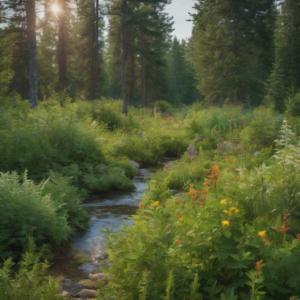
Native Ontario Ground Covers to Grow in 2024
0:00 / 0:00 Listen Now As we navigate the intricate tapestry of Eastern Ontario, the importance of incorporating native plants into our landscapes becomes increasingly
January 19th, 2019
I find myself inspired to garden at some of the weirdest times. As I write this article it’s -21 degrees in Ottawa but feels like -30 and a winter storm warning is blowing up everyone’s phones.
I’m sure most avid gardeners can relate. As the winter months in Eastern Ontario blow and wail, our only escape can be that nebulous dream of dark warm earth between your fingers and that deep rich smell that fills your nostrils. The distant sound of the wind whipping through the cacophony of different species in your garden; that tiger eye sumac, the tall stiff zebra grass and the safari of bird life over head
But the reality is, we’re still a few months out from this bliss. What most people don’t know is that gardening starts in January. But it starts with a plan.
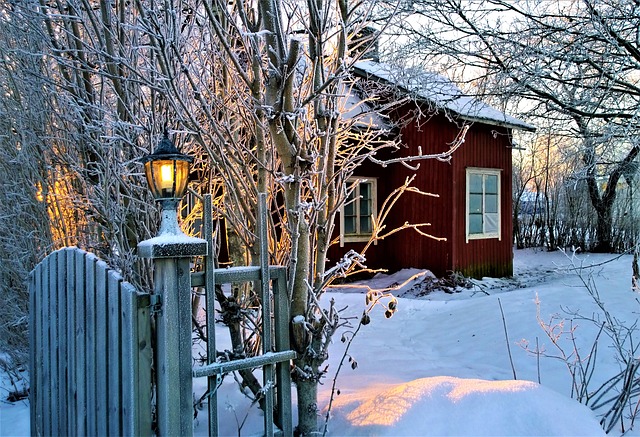
The best time to start planning for your landscape goals is after the hustle and bustle of the holiday season. It’s this time of year that nurseries start to amp up their marketing and if you’re like me, a member of different Facebook gardening groups like Ontario Hosta Society you’re thankful for the budding conversations about the season to come.
Building a garden or landscape project isn’t something you just do on a whim. A lot of people approach gardens with trial and error, which ultimately ends up costing a lot of money and wasting a lot of viable plant life.
With the right approach you can stand back and envision a space as you want it and then take that idea to a drawing board. In my opinion the biggest and most important stage of Landscape planning is the process of dreaming. When I am harmonizing a landscape space – much of my time is spent just staring and feeling the space. It’s my philosophy that the paradise is already there – it just requires a helping hand.
The space in which you will design a landscape project or garden is more dynamic than you might know. As this blue marble spins through space, tilting to and fro, sunlight is ebbing and flowing over Easter Ontario in an annual dance that affect every property. The light patterns and sun orientation are going to be the most influencing factors in your design versatility.
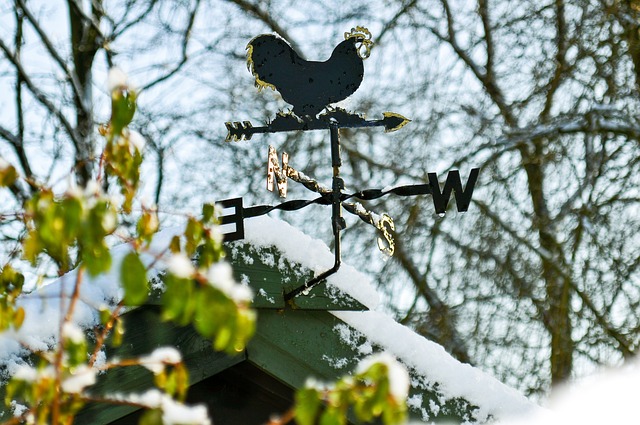
Get a clear picture of your cardinal directions. North, East, South and West will each play a huge role in your design and even how you use the space.
The second dynamic factor that you need to understand is the soil composition. There is nothing more complex in your garden than the substrate from which all life with blossom. This medium needs to be be different for almost every kind of plant. So understanding a bit about your soil is paramount in the planning process.
This is the foundation of your garden, literally. You will need to do some homework here and possibly get science involved. If you’re living in an urban development, all to often I see backyards with buried rubble or building materials with nothing more than a thin layer of topsoil spread out only a few inches deep. This just will not do.
Not all soil is created equal. You can learn more about that in some of my other articles. What’s important to realize at this planning phase is that you need a good substrate to grow in. If you’re just planting a small garden, don’t fuss to much with major soil tests. But if you’re planning on grading the soil and moving massive amounts of earth, this is a very important step in the planning of your project.
The second dynamic factor that you need to understand is the soil composition. There is nothing more complex in your garden than the substrate from which all life with blossom. This medium needs to be be different for almost every kind of plant. So understanding a bit about your soil is paramount in the planning process.
This can be one of the most monotonous parts of planning your landscape. Not only does it require research but the research takes time and you can find yourself waiting on the city. Regardless of the less creative elements to this phase in the project, it is one of the most important.
Driving over a waterline or septic bed can cause a lot of damage. Digging up a phone line or power line can cost you a lot of money to repair, not to mention it can be very dangerous in the case of the later.
It’s also important to know where sewer pipes and water mains run because you don’t want to build any structure over them in the event they need to be repaired or replaced by the city, you won’t be getting any help from your municipality to move or rebuild the structure.
When you’re starting this part of the plan here are some pointers.
Eastern Ontario has a fairly stable climate. Even so you need to accurately understand the climate in your area. Elevation and location to great bodies of water will have an effect on this data so do your homework.
It’s important to know what coldest temperature you will experience in your area. This will help you determine what plants you should grow in your garden and how you are going to grow them.
It’s also important to make note of your first and last average frost dates. In Ottawa, Ontario the first frost is between October 1st and October 10th. The last frost is usually between May 1st to May 10th. These dates will help you plan your season as you prepare to sew seeds or plant vegetable gardens. Here are a couple great visual interactive resources for first frost and last frost dates in Ontario.
Rainfall will be another matter of investigation, though most people in Eastern Ontario get the same amount of precipitation. Remember that snowfall counts toward your garden prospects too as snowfall helps top up the water tables. In Ottawa we get about 36.2 inches of precipitation. (In the case of snow, consider it melted)

Prevailing winds will be of some importance as well. Here in Eastern Ontario we have a steady southwesterly wind but in the winter we have a strong northern wind. This matters especially in the case of plants. Even though certain plants will thrive in the Ottawa area, if we plant them in a place that exposes them unnecessarily to winter winds they will experience a multiplying effect of the winter cold.

The planning phase will entail having a close look at the way the land is formed. You need to stand back and imagine how you will be using a space. If any degree of grading will be necessary to make the space more suitable to use, it will me important to map that out before you think about what plants you will buy or where they will go.
Often when we think of landscaping we think of grading the land. It’s ageless in fact, we have been turning slopes into plateaus for 10’s of thousands of years. It’s in our blood to shape the land around us.

It’s this phase of the planning that we start to look at how we will use the land. Will we need t0 terrace it in sections and connect it with steps? Will we need retaining walls? Will we need to remove big boulders? How will we use the landscape? Entertaining requires flat surfaces of lawn or patio. How much space to you have to work with and how can you maximize its versatility throughout your season.
Water is going to be one of the most interesting observations you will need to make. When I harmonize a new landscape I like to show up in the rain and look at the ground. Even the flattest topography can tell you a lot of secrets in a downpour. If I’m lucky enough to have a good rainfall before a project I like to zip over and get a feel for how the water is behaving.
Often we can tell what water will do based on the lay of the land, composition of soil and type of predominate plant life. Drainage is an important factor for a healthy garden. The balance of life depends on the coming and going of water. So look closely to see how water behaves.
I’ve seen it all when it comes to how property owners deal with existing flora. Sometimes it ends in regret, especially in the case of trees. My advice is call an expert arborist. Trees can take decades to mature and removing them should be a last resort. In my opinion if it’s older than you and it was there first leave it alone if its not hurting anything. Call me a sap (pun intended)
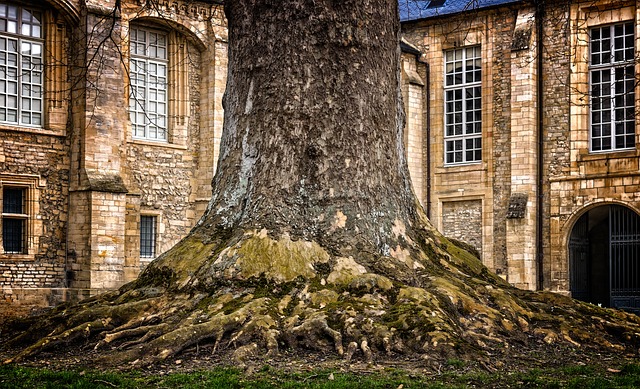
When I harmonize a space I like to spend some time wandering around daydreaming. I’m sure it seems a bit eccentric to some of my clients as they look out of their picture window and see me standing quietly staring off in the distance or at no particular thing at all.
I think the main reason we are driven to tame nature and domesticate our outdoor spaces is because we have an intrinsic need for order. We are calmed by order. But natures idea of order and our idea of order often don’t match. Nature wins in the end argument because nature’s version of order is balanced, and often ours isn’t.
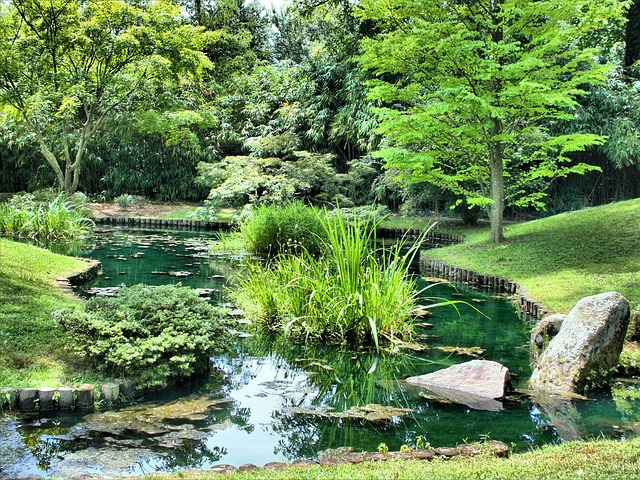
In any case, harmonizing a space can in fact lead to both versions of order and therefore balance. For the human version of order we need to consider focal points. How will we consciously enjoy the space? What journey do we want to take with our eyes and thoughts as we reflect or entertain. Even for the smallest of back yards this is a paramount part of the planning.
I grew up in rural ontario. My closest neighbour was a KM away. Here in Ottawa, one major concern I’m asked to address all the time is that of privacy.
Remember that your designs will impact your neighbours, sometimes positively and sometimes negatively. Remember to ask yourself important questions about privacy and neighbour-friendly plans.
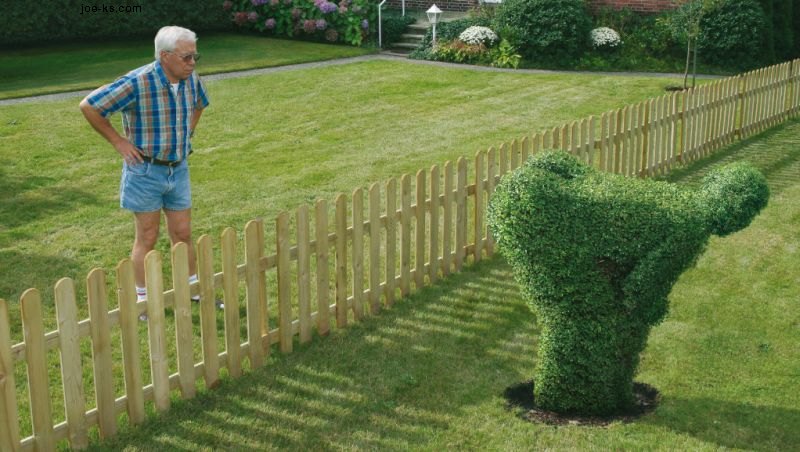
It’s my philosophy that some people are just born closer to nature. This connection can’t be explained other than through the love of what they create. Using nature as their canvas.

Dirt has been here long before us, and it will be here long after we go. Let's Shape it while we can.

0:00 / 0:00 Listen Now As we navigate the intricate tapestry of Eastern Ontario, the importance of incorporating native plants into our landscapes becomes increasingly
Shutting Down Your Garden There are many ways on how to prepare your garden for Ottawa’s cold season: tidying up, cutting back, planting certain species
The Importance of Landscape Planning January 19th, 2019 I find myself inspired to garden at some of the weirdest times. As I write this article
